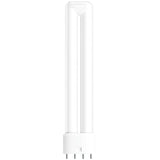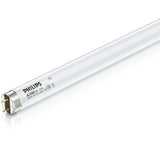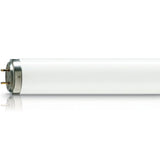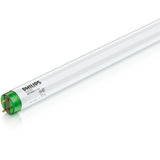How Bug Zappers Use Ultraviolet Light to Kill Insects
Posted by Nick on for ProLampSales

The sounds of Spring. Rain and thunderstorms, birds that are finally coming back after a long winter, and ZAP! That's right, it's time to talk about bug zappers, an invention that has come a long way since it was first patented in 1934.
How Bug Zappers Work
Bug zappers, despite many improvements in safety and insect luring potential, are basically the same as they were when first invented. An ultraviolet emitting light bulb attracts insects into a high voltage electrical wire mesh grid where the bugs are electrocuted. The light bulb and the wires are housed in a protective plastic or grounded metal cage.
Most Zappers use fluorescent light bulbs that emit ultraviolet light to attract the insects.
Why are bugs more attracted to ultraviolet light? Interestingly, the flower patterns that insects are attracted to are revealed in UV light!
When the insect sees the UV light from the bug zapper bulb, it enters the space in between the mesh grids. The bug itself completes the electric circuit, and the voltage crosses the space between the circuits, instantly vaporizing the bug. The circuit closing is what causes the "ZAP" sound from the instrument.
Do Bug Zappers Work?
Obviously, bug zappers work. Just ask anyone who has spent time around a zapper at night, as each insect that is killed can make the signature ZAP noise. However, a better question to ask is whether zappers are effective at killing the most annoying bugs.
Unfortunately, many biting bugs are not attracted to the UV light coming from bug zappers, mosquitoes and biting gnats included. Traditional bug zappers will kill a large number of harmless insects. In fact, they may even kill a larger number of beneficial insects than harmful ones.
Mosquitoes in particular are attracted to carbon dioxide (in your breath) and water vapor (in your sweat) rather than ultraviolet light from zappers. However, there are now bug zappers that emit both UV light as well as carbon dioxide.
One final consideration is to keep zappers well away from any areas where humans will congregate for longer periods of time, or any food preparation areas. Electrocuted bugs will turn into a mist that may contain parts of dead insects for up to 7 feet from the zapper. This mist can become contaminated with germs that feed off of the dead insect parts, which may then be inhaled or settle on humans or other animals.
While bug zappers are not an entirely effective means of controlling harmful biting insects, another option is to keep the bugs away altogether. Yellow bug lights can be used to illuminate patios and decks. Far fewer insects will show up because the yellow coating filters out the blue spectrum light which attracts many flying insects.
Featured Products (View All)
- 3 comments
- Posted in Landscape & Outdoor, Ultraviolet Light
3 comments





A very small amount of gas at night to the bees hole in the ground entrance kills the whole hive.
@Vivek
While all UV light can be damaging to humans, UVA and UVB are far less damaging than UVC.
UVA is used a lot in blacklights for currency/fraud inspection and stage/studio lighting. It is also used in bug zappers/insect traps and tanning beds. It would take very long exposure or very high-powered bulbs to start causing skin damage.
UVB is used for phototherapy, like treating jaundice in babies. It can also be used for longer exposure times.
UVC is the range that requires the least exposure time to cause skin damage. It is mostly only used in medical/germicidal applications.
There’s a range of UV light, which is why some UV bulbs can be safely used while others can be very damaging.
hold on…. isn’t UV dangerous for humans? All bulbs / appliances that emit UV have a blocking arrangement which prevent human exposure of UV.
But here in case of zappers, they seem openly using UV lamps.
Is this really allowed?